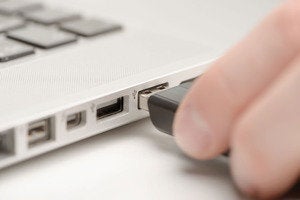
#Microsoft dart usb virus scanner update
So it does have some positives and could be useful in developing something.įrom a Rescue Disc or Offline standpoint though, this application or anything similar built off the default Windows Update API would not work. Looks like this is simply redoing the work of the Windows Update Mini-Tool but open source and in. Interesting find and thanks for sharing!! A couple of us on the Malwarebytes Toolset team have in-depth knowledge on Windows Update and development experience with using the Windows Update API specifically for obtaining, caching, and installing Windows Updates. (Plus, for Wine users, you could potentially even get around Windows Update blocks.) NET framework installations, again, especially on older versions of Windows.

NET framework, then you could even work around corrupted or out-of-date. If you were to use the open-source .NET Core stuff, instead of the traditional. Not to mention, it can even access the Windows Update servers if they're blocked by a firewall, by way of built-in proxies and the like (or at least, I think that's how i t works).
#Microsoft dart usb virus scanner install
Very handy because it not only allows you to block unwanted updates (and automatic updates) on Windows 10, but it also helps you install those stubborn updates that just don't want to install correctly, even on earlier versions of Windows. it could also probably be bundled with future versions of the Malwarebytes TechBench, Update Manager (open-source) by David Xanatos. In the meantime though, here's another tool that would probably be helpful to include on a hypothetical Rescue Disc, in the event that one eventually can get made.

The only way to build a proper offline rescue disc for Malwarebytes would be through a native tool like WinPE, which MS no longer provides licenses for (we tried they wouldn't even let us pay them to use it) that can properly load offline operating systems and registry hives so that Malwarebytes can read/scan them as though they were the native running OS.Īh. Most of its engine, signatures and capabilities rely on its ability to read the native data (including the registry and boot files/partitions) from the current active OS/disk, so running it offline in Linux to scan an offline Windows OS would not behave as expected and would not only be very likely to miss threats that would otherwise normally be detected within Windows, but also could actually result in the system partition being damaged because the system file protections and default whitelists for system critical components would not be active when scanning an offline drive.

Malwarebytes wouldn't work well at all through Wine in an offline Linux distro. Malwarebytes Tools Comments and Suggestions.Endpoint Detection & Response for Servers


 0 kommentar(er)
0 kommentar(er)
